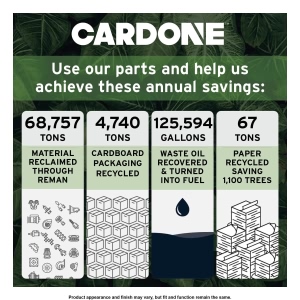< Back ×
2010 Cadillac Escalade ESV Brake Master Cylinder Bleeder Tool
My Vehicle Change Vehicle
2010 Cadillac Escalade ESV
< Back to View All
Brake Boosters & Brake Master Cylinders
- Department
- Brands
- Prices

 Product Specifications
Product Specifications- Bleeder Adapters Included: No
- Bleeder Pressure Gauge Included: No
- Bleeder Tubing Included: No
- E-Waste: No
- Material: Plastic
- Package Contents: Bleeder Tool
- Product Condition: New
- UPC: 082617849678
- Part Description: 2010 Cadillac Escalade ESV Master Cylinder Bleeding Tool
Vehicle Fitment- 2010 Cadillac Escalade ESV | All Trims | All Engines
FAQ for Brake Master Cylinder Bleeder Tool Repair
Q: What should be done if the brake pedal feels spongy?
A:
You should inspect the brake system for external leaks, and then perform the antilock brake system automated bleeding procedure to remove any air that may have been trapped in the brake pressure modulator valve (BPMV) with a scan tool.
By Bob
GM Specialist
28/10/2022Q: What is the automated bleeding procedure for the antilock brake system?
A:
The procedure is to install a scan tool, start the engine, allow the engine to idle, follow the instructions on the scan tool, remove the scan tool from the vehicle, fill the brake master cylinder reservoir to the maximum-fill level, bleed the hydraulic brake system, apply and release the brake pedal, drive the vehicle to exceed 13 km/h (8 mph), and then observe the feel of the brake pedal.
By Bob
GM Specialist
28/10/2022Q: What should be done if the brake fluid WAS contaminated with an oil-based or a silicone-based substance, indicated by fluid separation and/or a swollen master cylinder reservoir cap diaphragm and/or swollen reservoir-to-master cylinder grommets?
A:
You should remove ALL of the following components listed from the vehicle, clean out all the hydraulic brake pipes using denatured alcohol, or equivalent, dry the brake pipes using non-lubricated, filtered air, and then repair or replace ALL.
By Bob
GM Specialist
28/10/2022Q: What is the automated bleed procedure for the antilock brake system?
A:
The procedure is to remove the tire and wheel assemblies, inspect the brake system for leaks and visual damage, prepare the brake bleeding equipment and the vehicle for a pressure bleed of the base hydraulic brake system, inspect the battery state of charge, install a scan tool, turn the ignition ON, with the engine OFF, perform the automated bleed procedure as instructed by the scan tool, press and hold the brake pedal to inspect for pedal firmness, install the tire and wheel assemblies, adjust the brake fluid level, and then road test the vehicle while confirming the brake pedal remains high and firm.
By Bob
GM Specialist
28/10/2022Q: What should be done if you have performed a brake master cylinder bench bleeding on this vehicle, or if you disconnected the brake pipes from the master cylinder?
A:
You must ensure that the brake master cylinder reservoir is full to the maximum-fill level, loosen and separate the front brake pipe from the front port of the brake master cylinder, and allow a small amount of brake fluid to gravity bleed from the open port of the master cylinder, reconnect the brake pipe to the master cylinder port and tighten securely, have an assistant slowly depress the brake pedal fully and maintain steady pressure on the pedal, loosen the same brake pipe to purge air from the open port of the master cylinder, tighten the brake pipe, then have the assistant slowly release the brake pedal, loosen and separate the rear brake pipe from the master cylinder, and then ensure that both of the brake pipe-to-master cylinder fittings are properly tightened.
By Bob
GM Specialist
28/10/2022Q: What should be done for the hydraulic brake system flushing?
A:
You should inspect the brake fluid, inspect the master cylinder reservoir cap diaphragm, and the reservoir-to-master cylinder grommets for swelling, indicating brake fluid contamination, and replace the brake master cylinder reservoir cap diaphragm. The diaphragm may have allowed the moisture or particles to enter the hydraulic system, fill the brake master cylinder reservoir to the maximum-fill level with Delco Supreme 11(R), GM P/N 12377967 (Canada P/N 992667) or equivalent, and then pressure bleed the hydraulic brake system.
By Bob
GM Specialist
28/10/2022See more FAQs (1)
